The Daisy Shapes in Nature Badge encourages girls to explore the outdoors, identify shapes in natural objects, and create patterns, fostering observation skills and creativity.
Overview of the Daisy Shapes in Nature Badge
The Daisy Shapes in Nature Badge is designed for young Girl Scouts to explore and discover math concepts in the outdoors. It focuses on identifying shapes like circles, squares, and triangles in natural objects such as leaves, flowers, and rocks; The badge encourages creativity by making patterns and art using items found in nature. Activities include scavenger hunts, outdoor exploration, and hands-on projects that foster observation skills and teamwork. The badge is tailored for Daisy Scouts (grades K-1), with step-by-step guides and materials provided to help leaders facilitate fun and educational experiences. By completing the badge, girls develop an appreciation for nature and foundational STEM skills while building confidence and collaboration abilities.
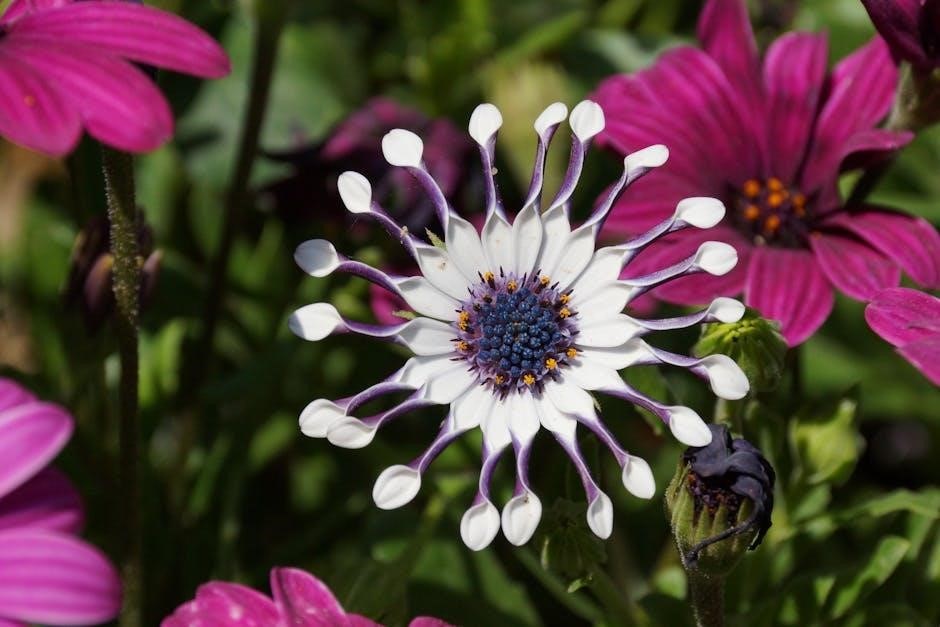
Understanding the Badge Requirements
Earning the Daisy Shapes in Nature Badge requires identifying shapes in natural objects, creating patterns, and completing outdoor activities that foster observation and creativity skills.

Earning the Daisy Shapes in Nature Badge
Earning the Daisy Shapes in Nature Badge involves guiding girls through hands-on activities that connect math and nature. The badge requires scouts to identify and explore shapes like circles, squares, and triangles in natural objects such as leaves, flowers, and rocks. Activities include scavenger hunts, creating patterns with found materials, and outdoor observation exercises. Leaders should encourage girls to think creatively and make connections between the natural world and everyday math concepts. The badge emphasizes skill-building, such as observation and teamwork, while fostering a deeper appreciation for nature. By completing these steps, Daisy Scouts develop foundational skills and confidence in their abilities to explore and learn.
Age-Appropriateness for Daisy Scouts
The Daisy Shapes in Nature Badge is specifically designed for Girl Scouts in grades K-1, making it an ideal activity for young learners. The badge’s focus on observation, creativity, and exploring nature aligns perfectly with the developmental stage of Daisy Scouts. Simple, hands-on activities like scavenger hunts and pattern-making are engaging and accessible for this age group. The badge introduces basic math concepts, such as shape recognition, in a playful and relatable way. By participating, girls develop essential skills like teamwork and critical thinking while building confidence. The activities are structured to accommodate the attention spans and abilities of young scouts, ensuring a fun and meaningful experience that fosters a love for learning and nature.
Materials Needed for the Badge
To earn the Daisy Shapes in Nature Badge, several materials are essential to facilitate engaging and educational activities. A clipboard, pencil, and paper are necessary for documenting observations during scavenger hunts. Magnifying glasses can help scouts examine natural objects closely. Cameras or smartphones are useful for capturing images of shapes found in nature. Collecting bags or containers are needed for gathering items like leaves, sticks, and rocks. Art supplies, such as markers or colored pencils, are required for creating patterns and drawings; An official badge guide provides step-by-step instructions and activity ideas; Additionally, a volunteer guide offers tips for leaders to support young scouts effectively. These materials ensure a hands-on and creative learning experience tailored to the badge requirements.
Activities for the Daisy Shapes in Nature Badge
Engage in a scavenger hunt for shapes, create patterns with natural objects, explore outdoors, play recognition games, and reflect on discoveries to meet badge requirements creatively.
Scavenger Hunt for Shapes in Nature
The scavenger hunt is a fun and interactive way for Daisy Scouts to explore nature while identifying shapes. Girls are encouraged to search for natural objects like leaves, rocks, and flowers that resemble shapes such as circles, squares, and triangles. Using magnifying glasses or clipboards, they can observe and record their findings. This activity takes about 25-35 minutes and requires minimal materials, making it perfect for outdoor adventures. Leaders can create a list of shapes for the girls to find, fostering teamwork and observation skills. The scavenger hunt not only teaches shape recognition but also connects the girls to the natural world, sparking curiosity and creativity. It’s an engaging way to meet badge requirements while enjoying nature together.
Creating Patterns with Natural Objects
Creating patterns with natural objects is a creative way for Daisy Scouts to engage with nature while learning about shapes. After collecting items like leaves, sticks, and rocks, girls can arrange them to form patterns or designs. This activity encourages observation and creativity, as they experiment with different shapes and textures. Leaders can guide the girls in identifying how natural objects fit into specific patterns, such as symmetry or repetition. The process helps develop fine motor skills and an appreciation for nature’s beauty. Girls can also discuss how these patterns appear in the natural world, reinforcing their understanding of shapes and their role in the environment. This hands-on activity makes learning fun and memorable, aligning perfectly with the badge requirements.
Outdoor Exploration and Observation
Outdoor exploration and observation are key components of the Daisy Shapes in Nature Badge. Girls are encouraged to venture into nature, such as parks or gardens, to identify shapes in their surroundings. This hands-on activity helps scouts develop their observation skills by closely examining natural elements like flowers, leaves, and rocks. Leaders can guide the girls in noticing how shapes appear in nature, such as circles in sunflowers or triangles in tree branches. This exploration fosters a deeper connection with the environment and introduces basic math concepts in a fun, interactive way. The activity aligns with badge requirements by promoting learning through discovery and direct observation of the natural world.
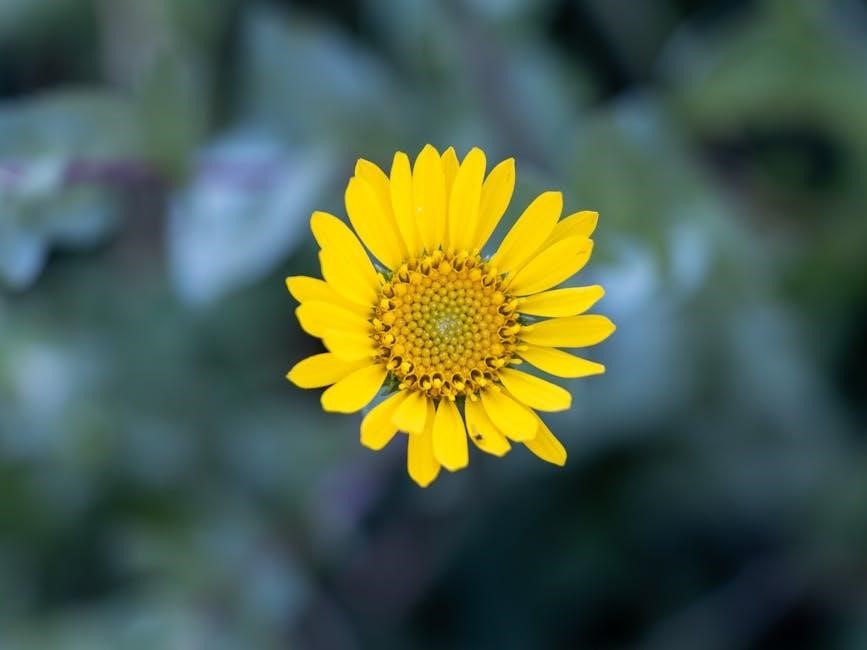
Games to Reinforce Shape Recognition
Games are an engaging way to help Daisy Scouts reinforce their shape recognition skills while earning the Shapes in Nature Badge. A scavenger hunt is a popular activity where girls search for natural objects that represent specific shapes, such as circles in stones or triangles in tree branches. Another fun game is a shape-themed Bingo, where scouts match shapes they find in nature to corresponding cards. Leaders can also organize relay races where teams collect items of a particular shape. These games not only make learning interactive but also encourage teamwork and problem-solving. By incorporating play into the process, scouts develop a stronger understanding of how shapes appear in nature and build confidence in their observational abilities.
Reflection and Sharing Experiences
Reflection and sharing experiences are key components of the Daisy Shapes in Nature Badge journey. After completing activities, scouts are encouraged to discuss what they learned, how they felt, and what surprised them. Leaders can guide the conversation by asking open-ended questions, such as, “What was your favorite shape you found in nature?” or “How did it feel to create a pattern using natural objects?” Sharing experiences allows girls to express their creativity and observations while listening to others’ perspectives. This step helps reinforce learning, builds confidence, and fosters a sense of accomplishment. By reflecting and sharing, scouts deepen their understanding of nature and math concepts, creating meaningful memories along the way.
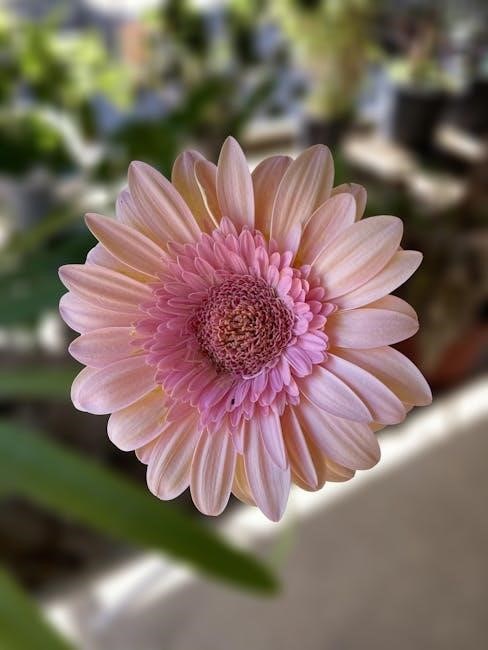
Leader’s Guide to the Badge
The Leader’s Guide offers strategies and support for facilitating the Daisy Shapes in Nature Badge, ensuring leaders are equipped to engage scouts effectively in nature-based activities.
Volunteer Guide for Daisy Leaders
The Volunteer Guide for Daisy Leaders provides essential tools and tips to help leaders effectively guide their troops through the Daisy Shapes in Nature Badge. This resource, often included in the official pamphlet, offers step-by-step instructions and activity ideas. Leaders can use the guide to prepare engaging lessons, such as scavenger hunts and pattern-making activities, that align with the badge requirements. It emphasizes fostering observation skills and creativity while encouraging teamwork. The guide also includes advice on adapting activities for different learning styles and ensuring all scouts participate meaningfully. By following the guide, leaders can help girls develop a deeper connection with nature and build confidence in their abilities. It’s a valuable tool for creating a fun and educational experience for young scouts.
Tips for Engaging Young Scouts
Engaging young Daisy Scouts requires a combination of creativity, patience, and adaptability. Leaders should encourage hands-on activities that spark curiosity, such as scavenger hunts for shapes in nature. Using visual aids like pictures or real-world examples can help girls identify patterns and shapes more easily. Incorporating movement, like nature walks or outdoor games, keeps the girls active and focused. Positive reinforcement is key—praise their discoveries and efforts to build confidence. Leaders should also consider the attention span of young scouts, breaking activities into shorter, manageable segments. Providing opportunities for collaboration fosters teamwork and shared learning experiences. By making the process fun and interactive, leaders can ensure that girls stay engaged and excited about earning their Daisy Shapes in Nature Badge.
Assessing Completion of Badge Requirements
Assessing completion of the Daisy Shapes in Nature Badge involves observing scouts’ participation and understanding throughout activities. Leaders should evaluate girls’ ability to identify shapes in nature and create patterns using natural objects. Review their drawings or collections for accuracy and creativity. Encourage girls to share their findings, listening for their ability to describe shapes and patterns. Use simple, age-appropriate criteria to ensure each girl meets the badge requirements. A checklist or verbal feedback can help track progress. The goal is to ensure each scout demonstrates basic understanding and enthusiasm for exploring math concepts in nature. Completion is based on effort, participation, and demonstrated learning, not perfection.
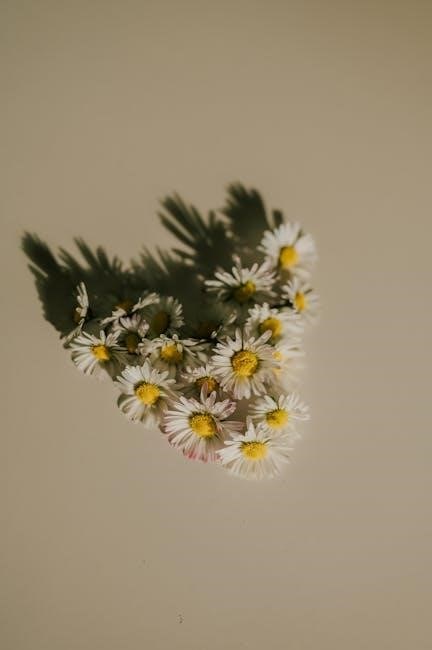
Resources for the Daisy Shapes in Nature Badge
The official PDF guide, online tutorials, and community forums provide detailed steps, activity ideas, and support for leaders and scouts to earn the badge successfully.
Official PDF Guide for the Badge
The official Daisy Shapes in Nature Badge PDF guide is a comprehensive resource designed to help leaders and scouts navigate the requirements seamlessly. This 12-page pamphlet outlines step-by-step activities, including searching for shapes in nature, creating patterns, and reflecting on experiences. It also includes a 4-page volunteer guide, offering tips for engaging young scouts and facilitating meaningful learning. The guide emphasizes developing observation skills, creativity, and an appreciation for nature. Leaders can use the PDF to plan meetings, prepare materials, and assess progress. It’s an essential tool for ensuring scouts earn their badge while fostering a love for STEM concepts and teamwork. The guide is available on the official Girl Scouts website and is a must-have for a successful badge-earning experience.
Online Tutorials and Videos
Online tutorials and videos provide valuable support for leaders and scouts working on the Daisy Shapes in Nature Badge. These resources, available on platforms like YouTube and the Girl Scouts website, offer step-by-step guides for activities such as scavenger hunts, pattern creation, and outdoor exploration. Videos demonstrate how to identify shapes in nature, create art with natural objects, and engage young scouts effectively. They also include tips for preparing materials and facilitating discussions. Many tutorials feature real-life examples from troops that have earned the badge, making them relatable and inspiring. These digital tools are especially helpful for new leaders looking to deliver fun and educational experiences for their Daisy Scouts.
Community and Forum Support
The Girl Scout community offers extensive support through online forums and groups dedicated to the Daisy Shapes in Nature Badge. Leaders and scouts can connect with others to share ideas, ask questions, and gain tips for completing badge requirements. These platforms provide a space to exchange resources, discuss challenges, and celebrate successes. Many forums feature advice from experienced leaders who have guided their troops through the badge process. Additionally, community members often share photos and stories of their activities, offering inspiration and practical insights. Engaging with these networks can enhance the overall experience and provide valuable guidance for both new and seasoned leaders working on the badge with their Daisy Scouts.
Recommended Books and Materials
To support the Daisy Shapes in Nature Badge, several resources are recommended; Field guides for identifying plants and rocks can help scouts recognize shapes in nature. Art supplies, such as sketchbooks and colored pencils, are essential for documenting observations and creating patterns. Magnifying glasses or hand lenses can aid in examining natural objects up close. Storybooks about nature and geometry, like “The Greedy Triangle” or “Leaf Man,” can inspire creativity and learning. Additionally, materials like shape-sorting games or flashcards can reinforce shape recognition. A journal for recording findings and reflections is also a valuable tool. These materials provide a hands-on and engaging way for Daisy Scouts to explore and understand shapes in nature while fostering their creativity and observation skills.

Real-Life Applications and Stories
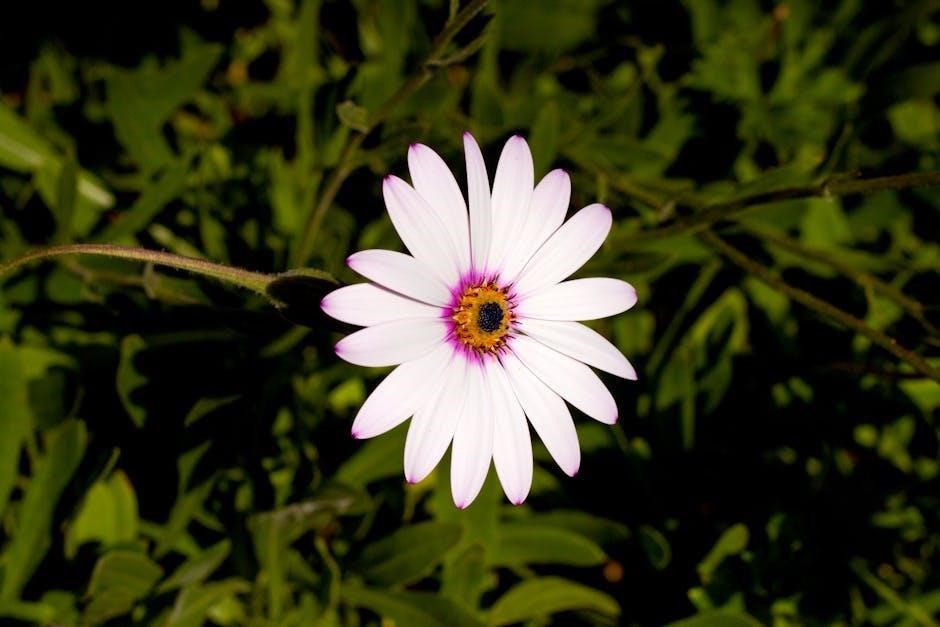
Earning the Daisy Shapes in Nature Badge inspires creativity and curiosity. Troops share stories of girls discovering shapes in flowers, leaves, and clouds, sparking STEM interest.
Success Stories from Daisy Troops
Many Daisy troops have successfully earned the Shapes in Nature Badge by engaging in creative outdoor activities. One troop discovered various shapes in leaves, rocks, and flowers during a scavenger hunt, sparking excitement about nature’s math connections. Another group used natural objects to create intricate patterns, fostering teamwork and creativity. Leaders reported that the badge helped girls develop observation skills and confidence. Parents shared photos of their daughters proudly displaying their badges, highlighting the sense of accomplishment. These stories showcase how the badge inspires young scouts to explore and appreciate the natural world while building essential skills.
Testimonials from Girl Scouts
Girl Scouts who have earned the Daisy Shapes in Nature Badge often share their exciting experiences. One scout said, “I loved finding circles in flowers and squares in leaves—it made me see nature differently!” Another shared, “This badge taught me to look closely at the world around me and discover hidden patterns.” Many girls expressed joy in creating art with natural objects and collaborating with friends. Leaders also praised the badge for fostering creativity and observation skills. The badge has inspired a deeper appreciation for nature and sparked curiosity in young scouts, making it a memorable and enriching experience for all participants.
Photo Gallery of Badge Activities
A photo gallery showcasing Daisy Scouts’ adventures while earning the Shapes in Nature Badge offers a visual journey of creativity and exploration. Images capture girls identifying shapes in leaves, flowers, and clouds, creating patterns with natural objects, and collaborating on outdoor projects. The gallery highlights their discoveries, such as circles in sunflowers and triangles in pinecones, and displays their artistic interpretations. These photos inspire other troops by illustrating the fun and learning involved in the badge activities. Leaders and parents can use the gallery to share successes and encourage participation in STEM and nature-based programs. It serves as a celebration of the girls’ curiosity and creativity, proving that learning can be both enjoyable and visually captivating.
Skill Development Through the Badge
Earning the Daisy Shapes in Nature Badge fosters leadership, teamwork, and critical thinking as girls collaborate on activities, developing essential life skills through hands-on exploration.
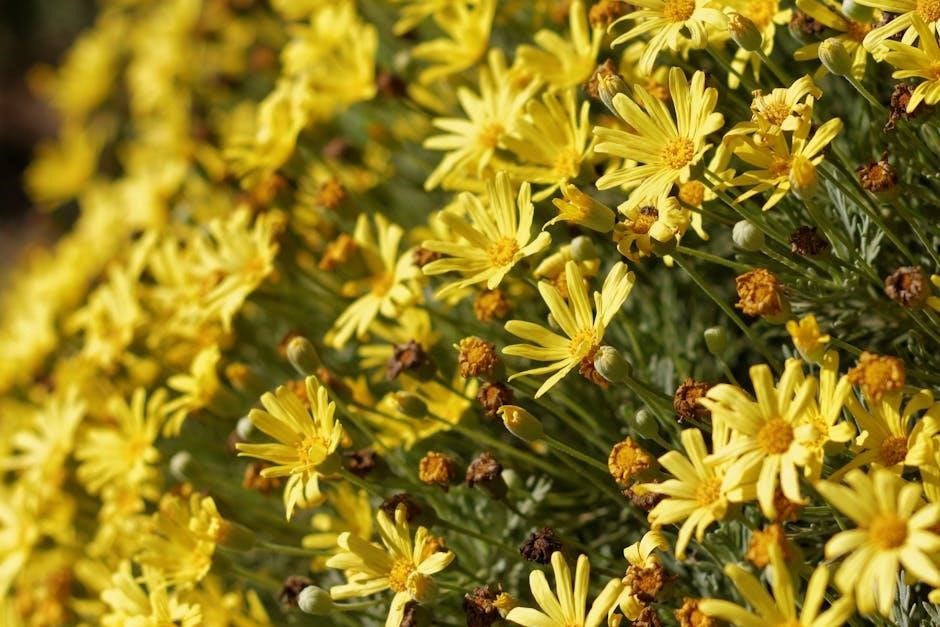
Developing Observation Skills
Developing observation skills is a core focus of the Daisy Shapes in Nature Badge. Through activities like scavenger hunts and nature walks, girls learn to carefully examine their surroundings, identifying shapes in leaves, flowers, and other natural objects. These exercises train their eyes to notice details they might otherwise overlook, fostering a deeper connection with the environment. Leaders are encouraged to guide girls in slowing down and truly observing, helping them refine their ability to see and interpret the world around them. This skill not only enhances their participation in badge activities but also builds a foundation for lifelong curiosity and exploration. By teaching girls to slow down and observe, the badge helps them develop a sharper awareness of nature’s beauty and complexity.
Encouraging Creativity in Nature
The Daisy Shapes in Nature Badge fosters creativity by inspiring girls to see nature as a canvas for artistic expression. Through activities like pattern-making with leaves, sticks, and flowers, girls are encouraged to experiment and innovate. Leaders can prompt imaginative thinking by asking scouts to envision shapes transforming into art or stories. This badge helps girls realize that creativity is not just about drawing but also about rearranging natural elements to convey ideas. By exploring nature’s diversity, scouts develop a unique perspective, learning to express their individuality while connecting with the environment. These experiences build confidence and inspire girls to view the world as a place where creativity and nature intertwine seamlessly.
Teamwork and Collaboration
The Daisy Shapes in Nature Badge emphasizes teamwork and collaboration as essential skills for young scouts; Activities such as group scavenger hunts and shared pattern-making encourage girls to work together, fostering communication and mutual respect. By collaborating, scouts learn to rely on one another’s strengths, whether identifying shapes in nature or creating art with natural objects. Leaders can facilitate teamwork by assigning group tasks that require cooperation, such as sorting leaves by shape or designing a collective nature collage. These shared experiences help girls build social skills, confidence, and a sense of unity. Teamwork also teaches them the value of diverse perspectives and how collaboration can lead to creative solutions, preparing them for future challenges in a fun and engaging way.
Introducing STEM Concepts
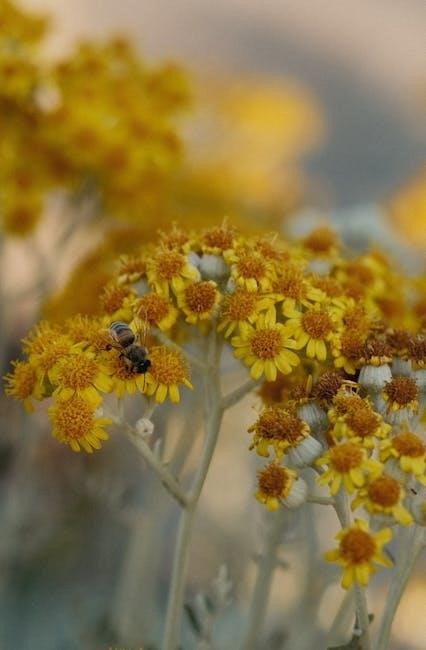
The Daisy Shapes in Nature Badge introduces young scouts to foundational STEM concepts through hands-on exploration. By identifying shapes in natural objects, girls engage with basic geometry and math principles. Observing patterns in leaves, flowers, and clouds sparks curiosity about the natural world, connecting to science and environmental concepts. Activities like creating patterns with natural materials encourage problem-solving and creativity, aligning with engineering and design thinking. Even simple tools, like magnifying glasses or cameras, introduce technology in a fun way. These experiences not only build STEM skills but also foster a sense of wonder and inquiry, preparing girls for future STEM-related challenges with confidence and curiosity.
Building Leadership Skills
The Daisy Shapes in Nature Badge empowers girls to develop leadership skills through collaborative activities and decision-making. As they lead small groups in scavenger hunts or pattern-making, they practice guiding and supporting their peers. Encouraging girls to take charge of specific tasks, like organizing materials or explaining their findings, fosters confidence and responsibility. These experiences teach them to communicate clearly and work together toward a common goal. By allowing girls to take ownership of their projects, the badge helps them understand the value of teamwork and the importance of their contributions. This foundational leadership training prepares them to take on more significant roles in future endeavors, both within and outside of Girl Scouts.
Troubleshooting and FAQs
- Q: What if girls struggle to find shapes in nature?
A: Encourage patience and remind them to look closely at patterns in leaves, flowers, or clouds. - Q: How long does the badge typically take to complete?
A: Activities can be adjusted to fit time constraints, but most troops finish in 1-2 meetings. - Q: What if materials are unavailable?
A: Use items like leaves, sticks, or rocks as alternatives for creating patterns and shapes.
Common Challenges Faced by Leaders
Leaders guiding the Daisy Shapes in Nature Badge may face challenges such as keeping young scouts engaged during outdoor activities, managing varying skill levels, and ensuring safety while exploring nature. Some leaders may struggle with identifying shapes in natural objects themselves, which can make teaching the concept difficult. Additionally, organizing activities that cater to different learning styles and attention spans can be a hurdle. Weather conditions and limited access to natural environments may also pose challenges. Providing clear instructions and maintaining patience while fostering creativity and observation skills are key to overcoming these obstacles and ensuring a successful experience for all participants.
Frequently Asked Questions
What activities are required to earn the Daisy Shapes in Nature Badge? Girls must explore nature, identify shapes, and create patterns using natural objects.
Is the badge suitable for all Daisy Scouts? Yes, it is designed for Kindergarten and 1st-grade girls, focusing on observation and creativity.
What materials are needed? Basic supplies include magnifying glasses, paper, pencils, and access to outdoor spaces.
How long does it take to complete the badge? Activities can be finished in 2-3 meetings, depending on the group’s pace.
Can the badge be completed indoors? While outdoor exploration is encouraged, some activities can be adapted for indoor settings.
How are scouts assessed for badge completion? Leaders observe participation and understanding of shape recognition in nature.
Are additional resources available? Yes, the official PDF guide and online tutorials provide detailed instructions and tips for leaders.
Can parents assist during activities? Yes, parent involvement is welcomed and encouraged to support the girls’ learning experience.
What if some scouts struggle with shape identification? Leaders can provide extra guidance and use visual aids to help them understand.
Are badges awarded immediately after completion? Badges are typically awarded during a troop meeting or ceremony after all requirements are met.
The Daisy Shapes in Nature Badge fosters curiosity, creativity, and observation skills, encouraging girls to explore and appreciate the natural world around them.
Final Thoughts on the Badge
The Daisy Shapes in Nature Badge offers a transformative experience, blending fun with learning to foster observation, creativity, and an appreciation for nature. By exploring natural environments, identifying shapes, and creating patterns, girls develop essential skills like STEM awareness and teamwork. The badge’s hands-on activities, such as scavenger hunts and outdoor exploration, make learning engaging and memorable. Leaders play a key role in guiding scouts through these experiences, ensuring they feel empowered and confident. Earning this badge is not just about completing requirements—it’s about inspiring curiosity, creativity, and a lifelong connection to the natural world. It’s a meaningful foundation for future adventures and leadership in Girl Scouts.